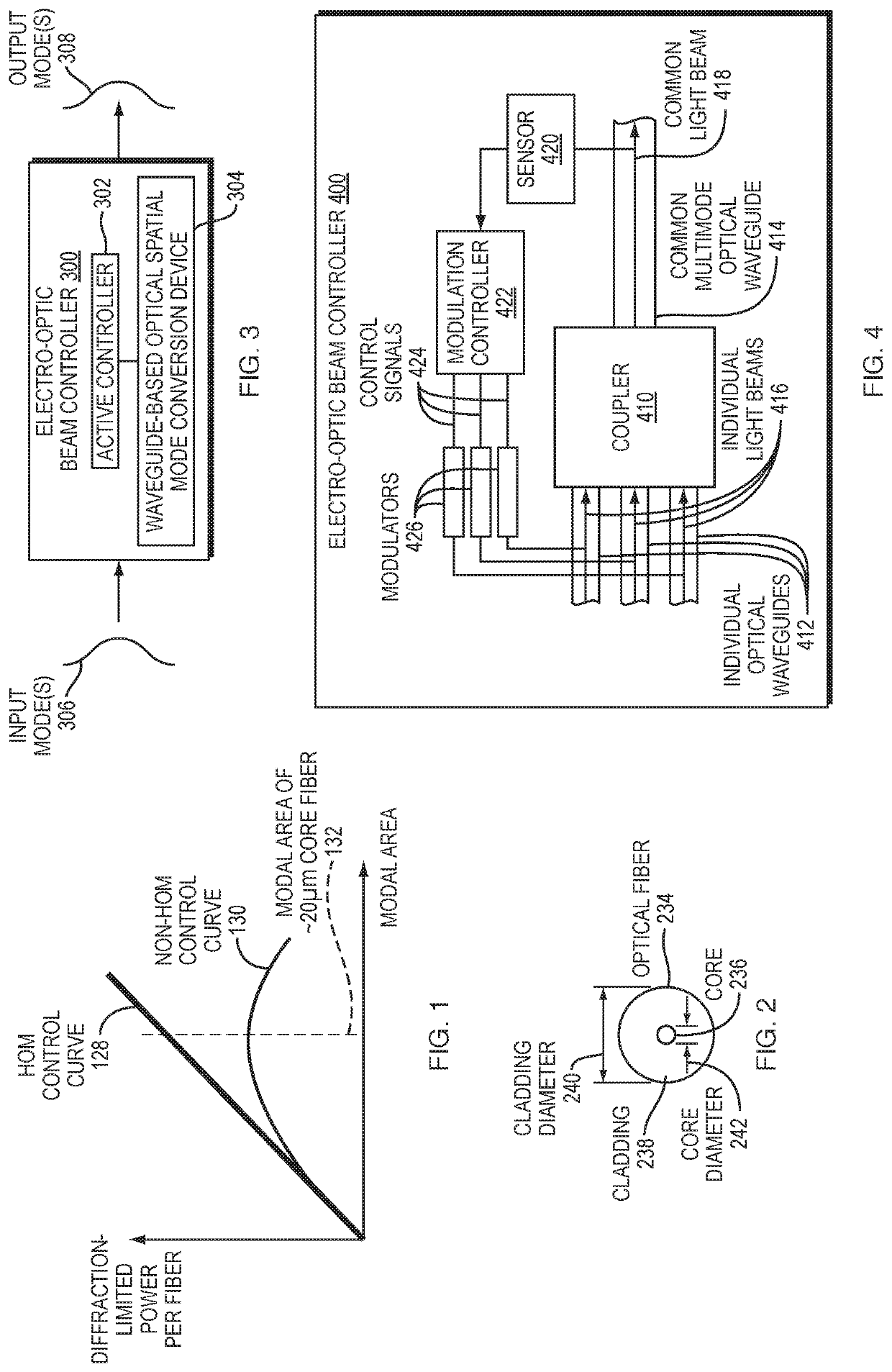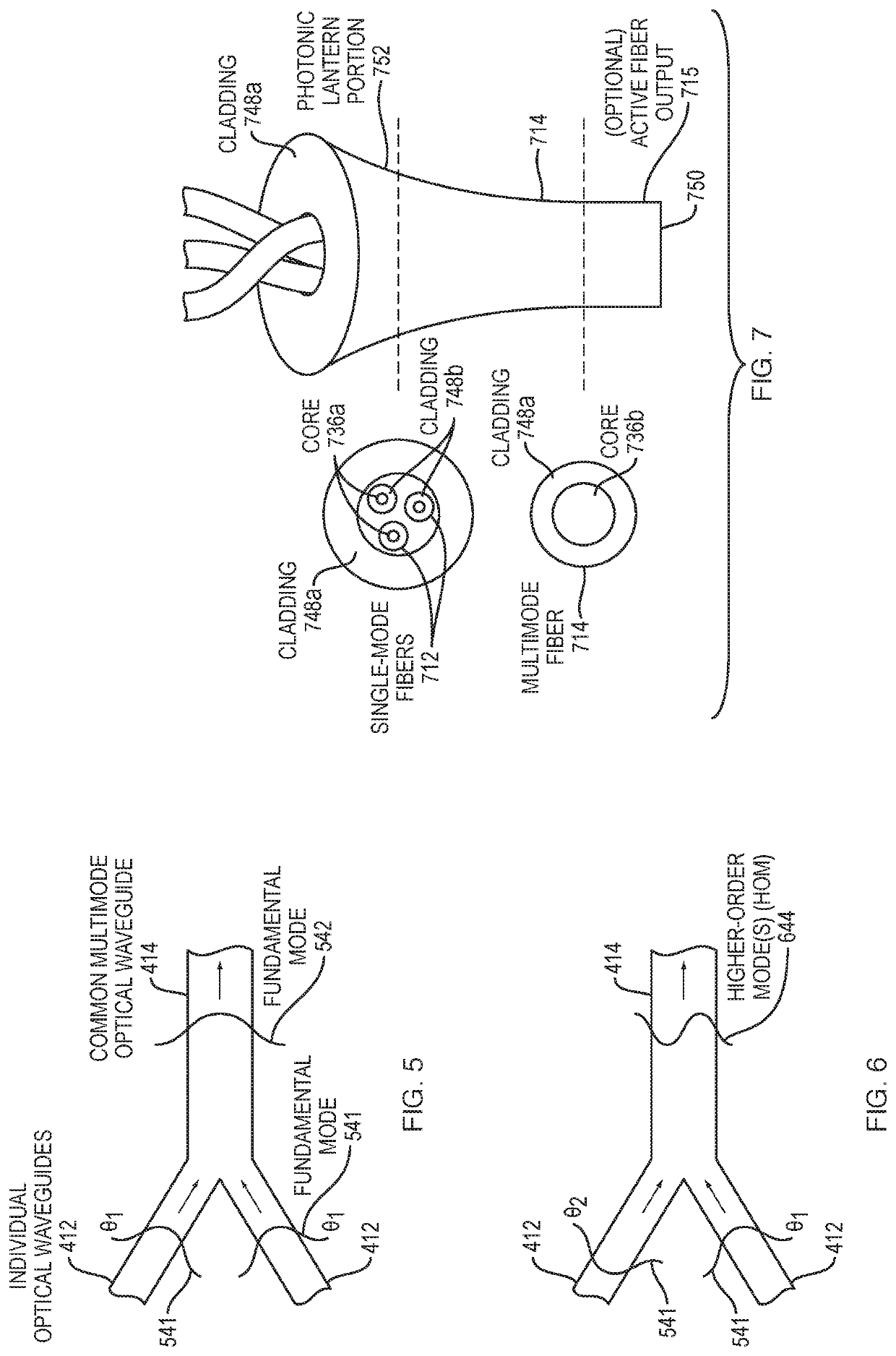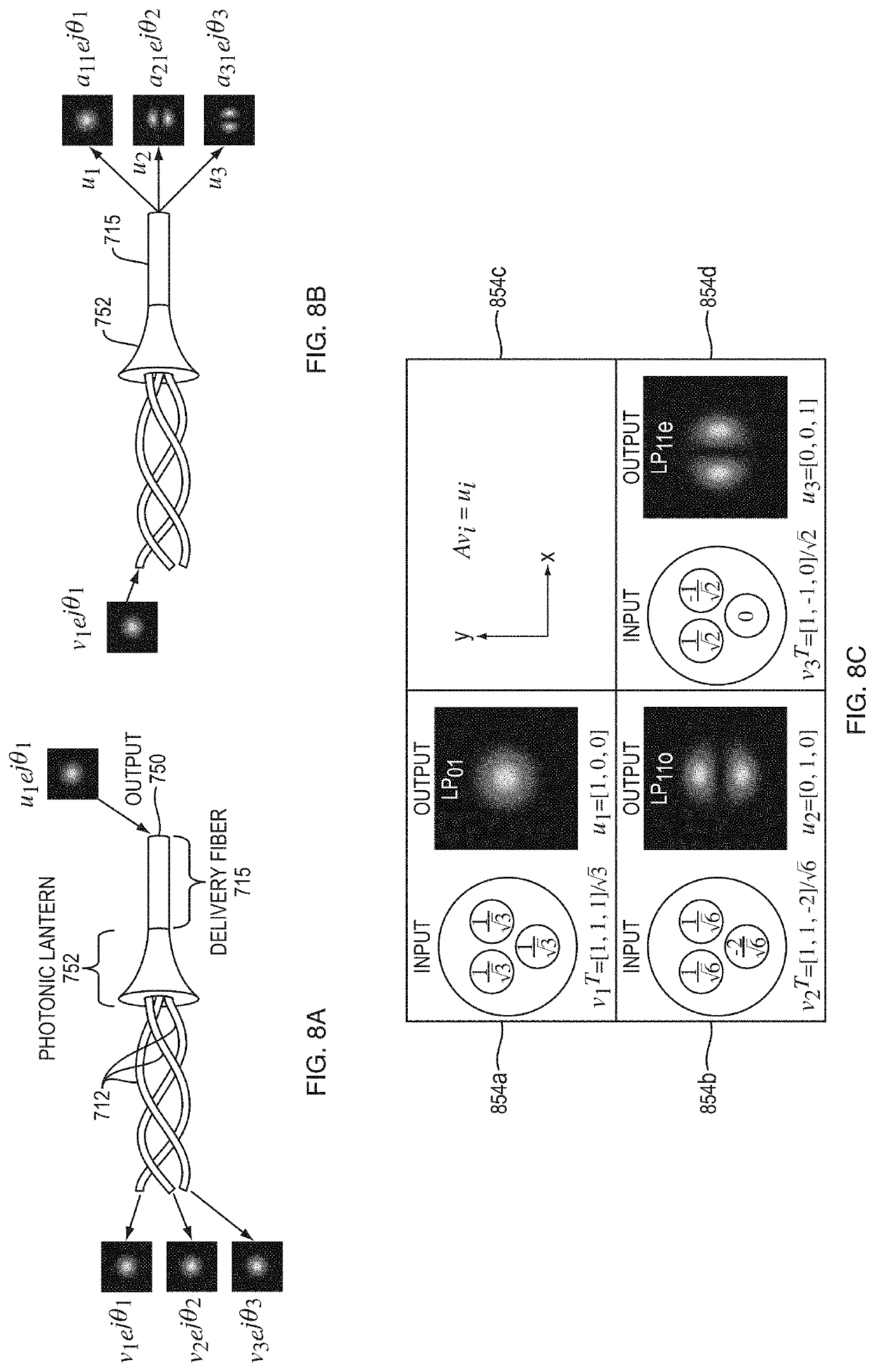Electro-Optic beam controller and method
a beam controller and optical technology, applied in non-linear optics, instruments, optical elements, etc., can solve the problems of significant limitations on the scaling of the modal area of an individual optical fiber, the inability to bend or curl the fiber arbitrarily, and the significant limitations of the fiber coiling method. achieve the effect of reducing size and weight, reducing the size and weight of the fiber, and reducing the size and weigh
- Summary
- Abstract
- Description
- Claims
- Application Information
AI Technical Summary
Benefits of technology
Problems solved by technology
Method used
Image
Examples
Embodiment Construction
[0124]A description of example embodiments of the invention follows.
[0125]FIG. 1 is a graph that illustrates the effects of higher-order modes (HOMs) on the diffraction-limited power that can be achieved per optical fiber as modal area increases. In particular, if HOMs are eliminated, then the diffraction-limited power per fiber increases linearly with the fibers modal area, as illustrated in the linear curve 128. However, in the presence of transverse mode instability, where HOMs are not controlled, the diffraction-limited power per optical fiber first increases with modal area, then actually decreases as modal area continues to increase, as illustrated by a nonlinear curve 130 in FIG. 1. A maximum in this curve occurs around a modal area 132 of an optical fiber having a core of approximately 20 μm in diameter. Thus, power in an optical fiber is limited by nonlinearities. Some of these nonlinearities can include stimulated Brillouin scattering (SBS), stimulated Raman scattering (SR...
PUM
| Property | Measurement | Unit |
|---|---|---|
| diameter | aaaaa | aaaaa |
| diameter | aaaaa | aaaaa |
| diameter | aaaaa | aaaaa |
Abstract
Description
Claims
Application Information
 Login to View More
Login to View More - R&D
- Intellectual Property
- Life Sciences
- Materials
- Tech Scout
- Unparalleled Data Quality
- Higher Quality Content
- 60% Fewer Hallucinations
Browse by: Latest US Patents, China's latest patents, Technical Efficacy Thesaurus, Application Domain, Technology Topic, Popular Technical Reports.
© 2025 PatSnap. All rights reserved.Legal|Privacy policy|Modern Slavery Act Transparency Statement|Sitemap|About US| Contact US: help@patsnap.com



